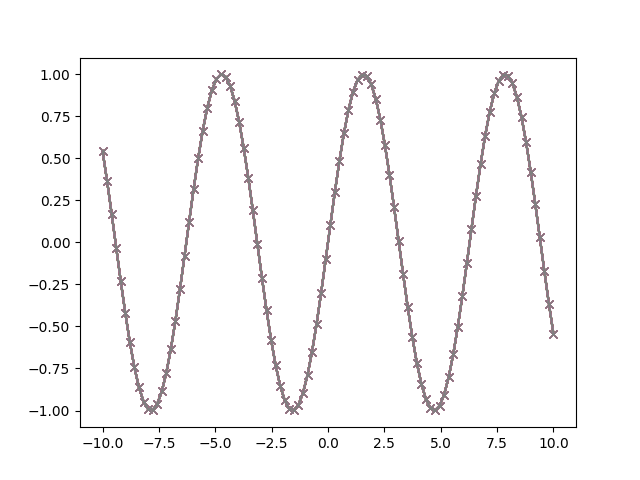Python Libraries for ML
08/29/22
Advanced Python
- List comprehensions
- Doc strings and help()
- Exceptions
Bad Imports
from matplotlib.pyplot import *
from statistics import *
from numpy import *
Bad imports!
- Hide functionality
- Where did that function come from?
Good imports
import matplotlib.pyplot as plt
import statistics as stat
import numpy as np
Essential Libraries
Anaconda
Nice distribution that includes:
- Scikit-learn
- Numpy
- Scipy
- matplotlib
- pandas
- Jupyter Notebook
Scikit-learn
- Widely used, open source machine learning library
- You will need to read the documentation sometimes
- http://scikit-learn.org
Numpy
- Important library for scientific computing
- Data structures like multidimensional arrays
- Lots of linear algebra functions
- Random number generators
- etc.
Numpy arrays
import numpy as np
x = np.array([[1,2,3],[4,5,6]])
print("x:\n{}".format(x))
x: [[1 2 3] [4 5 6]]
Scipy
- Collection of scientific computing functions
- Advanced linear algebra
- function optimization
- Signal processing
- Statistical distributions
Scipy sparse matrices
from scipy import sparse
# 2D NumPy array, identity matrix
eye = np.eye(4)
print("NumPy array:\n{}".format(eye))
NumPy array: [[1. 0. 0. 0.] [0. 1. 0. 0.] [0. 0. 1. 0.] [0. 0. 0. 1.]]
Scipy sparse matrices
sm = sparse.csr_matrix(eye)
print("SciPy sparse CSR matrix:\n{}".format(sm))
SciPy sparse CSR matrix: (0, 0) 1.0 (1, 1) 1.0 (2, 2) 1.0 (3, 3) 1.0
matplotlib
- Scientific plotting library
- Line charts, histograms, scatter plots, etc.
Line plot
import numpy as np
import matplotlib.pyplot as plt
# Generate sequence from -10 to 10, 100 steps in between
x = np.linspace(-10, 10, 100)
y = np.sin(x)
plt.plot(x, y, marker="x")

Pandas
- Data "wrangling" and analysis library
DataFramedata structure, modeled onR'sDataFrame- Basically a table, like an Excel spreadsheet as a varaible
- pandas can read in many file formats, e.g., SQL, Excel files, CSV
Tables
import pandas as pd
# create simple dataset
data = {'Name': ["John", "Anna", "Peter", "Linda"],
'Location': ["New York", "Paris", "Berlin", "London"],
'Age': [24, 13, 53, 33]
}
data_pandas = pd.DataFrame(data)
data_pandas
| Name | Location | Age | |
|---|---|---|---|
| 0 | John | New York | 24 |
| 1 | Anna | Paris | 13 |
| 2 | Peter | Berlin | 53 |
| 3 | Linda | London | 33 |
Tables
data_pandas[data_pandas.Age > 30]
| Name | Location | Age | |
|---|---|---|---|
| 2 | Peter | Berlin | 53 |
| 3 | Linda | London | 33 |
Jupyter Notebook
- Interactive environment for editing/running code
- Mix text and code
- Run code and display results immediately